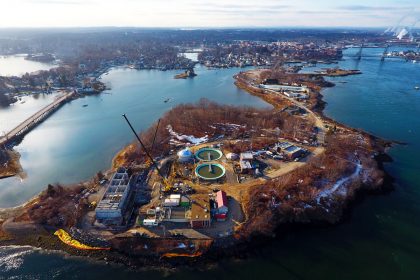What Causes Sea Levels to Rise?
Here’s a hint: there’s a good reason we start this article off with the striking photograph of the Tanaga Volcano in the Aleutian Islands. Tanaga is showing signs of a possible imminent eruption. Volcanism may influence climate change more than human activities like burning fossil fuels. More on that soon!

Tanaga Volcano, Aleutian Islands, Alaska: Tanaga (volcano) – Wikipedia
Source: Wikipedia
The Curse of Fossil Fuels: Something Doesn’t Fit
The popular press would have you believe that there is only one reason why sea level rises and that is because humans burn fossil fuels. Therefore, the use of fossil fuels must be banned!
But if this were true, sea levels would have risen far more than they have and flooding of the Seacoast would be widespread. The Maldives, the poster child of an entire country located at sea level in the Indian Ocean, would have disappeared due to sea level rise.
But even though carbon dioxide (CO2) has built up in the atmosphere due to anthropomorphic activities such as the burning of fossil fuels, these long-forecasted results have not come to pass. Yes, the atmosphere may have warmed 1 or 2 degrees Celsius over the past 100+ years. But our own examination of the NOAA charts in our last installment (Part II) has shown that sea level rise has not yielded catastrophic results.
Sea level has risen, but NOAA estimates that it rises only 1.7 millimeters per year. That’s about a half a foot of sea level rise in 100 years.
It’s so small that the Obamas don’t need to worry about their waterfront estates on Martha’s Vineyard or in Hawaii. Al Gore can continue to live comfortably in his estate in Malibu. They won’t be flooded. (Of course, they have known this all along.)
Something doesn’t fit, then, with the disastrous forecasts made by climate scientists. It’s time to review the science and figure out what may make sense … and what doesn’t.
Enter the North Atlantic Oscillation
Late in the 16th century, long before carbon dioxide concentrations in the atmosphere began to increase, a missionary had traveled back and forth across the Atlantic Ocean for several years. He noted that mild winter conditions in Greenland often coincided with severe winter conditions in Denmark, and vice versa.
The severe-versus-mild phenomenon the missionary described is now recognized as an impact of the North Atlantic Oscillation, or NAO.
What may be of special value in recognizing the importance of the NAO is that there is a fluctuation in weather patterns and resulting storminess and temperature that can span decades in duration. The fluctuation also affects Greenland glaciers and Labrador and Arctic sea ice thickness. The NAO can cause polar ice to melt or to accumulate and that affects our NOAA sea level graphs.
Sometimes the sea level rises a bit faster than the 100-year average. Other times, the rate of rise slows way down and sometimes it hardly rises at all over a decade. The changes in the rates are due to changes in the NAO.
Changes in the NAO Cause Surface Temperatures to Change
Here are depictions of the temperature variability on the Earth’s surface as shown by NOAA’s Physical Sciences Lab. The red is “hotter” and the blue is “cooler.”

Depiction of Climate Variability Due to the North Atlantic Oscillation
Look at the differences in surface temperature. When the NAO Index is negative (left-hand globe), Greenland, Labrador and the Arctic are warm. That helps melt the glaciers and sea ice.
When the NAO Index is positive (right-hand globe), Greenland, Labrador and the Arctic are cold and glaciers stop shrinking. Sea ice thickens and glaciers grow.
The Arctic Oscillation is closely connected to the NAO Index and extends these effects into the Arctic Ocean, thus causing hemispheric-wide shifts in warming and cooling.
The NAO Index Defined
The NAO Index describes changes in strength between two dominant and recurring air masses or pressure patterns over the North Atlantic Ocean: a low pressure located to the west of Iceland and a high pressure located near the Azores.
How Does the Index Affect Weather and the Jet Stream?
Look at the two globes below. They show the results of a negative NAO Index (left-hand globe) and a positive NAO Index (right-hand globe).
When the NAO Index is positive, these pressure systems are well-established with strong pressure differences between the high and the low. The NAO Index is negative when the pressure differences between the two systems are weaker and smaller.
A Positive NAO Index: It’s Colder Up North ….
A positive NAO creates a stronger Atlantic jet stream and a northward shift of the Atlantic storm track. This creates increased storminess and precipitation and warmer-than-average temperatures that are associated with the air masses that arrive from lower latitudes.
In southern Europe, storminess is lessened, and precipitation is below-average. In eastern North America, when the NAO Index is positive, it generally brings higher air pressure, fewer cold-air outbreaks and decreased storminess.
…. A Negative NAO Index: It’s Warmer Up North
When the NAO Index is negative, the difference between the low pressure near Iceland and the high pressure near the Azores is weaker than average. Then, the Atlantic jet stream and storm track have a more west-to-east track.
The storminess, precipitation and temperatures of Northern Europe all diminish or are lower. Southern Europe’s temperatures are higher, its storminess increases and it experiences higher-than-average precipitation. In eastern North America, a negative NAO Index brings lower air pressures, causing stronger cold-air outbreaks and increased storminess.
Schematically, this is shown in the following generalized global maps from NOAA:

So the Rate of Sea Level Rising Is Affected …
Why is this important to sea level rise? Yes, these shifts impact our demand for energy, quality of crop yields and productivity of fisheries. But they also have a clear impact on the rate at which the alpine and continental glaciers of Greenland melt or grow and the sea ice of the Arctic thickens or thins..
… and That Brings Us to the Rate at Which Sea Level Rises.
A warmer atmosphere over Greenland (a negative NAO Index) causes greater ice melt and more meltwater causes sea levels to rise. A colder atmosphere over Greenland (a positive NAO Index) allows thickening sea ice in the Arctic Ocean and building Greenland glaciers, thus slowing or even eliminating sea level rise.
Why Does the NAO Index Shift Back and Forth?
Recent work (over the past five years) by a group of Swedish climatologists explores mechanisms that might drive such shifts.
While the time record is limited in terms of how weather has fluctuated over the past 10,000 years because surface data are limited due to geographic extent and lack of continuity. Without greater detail, it is difficult to confirm or deny the trends observed in shorter duration observations and models. However, two dynamics are identified as having promise in explaining the drivers that cause the NAO Index to shift positive or negative.
The First Is Solar Insolation
Solar activity has shown an eleven-year cycle of intensity and there are apparent linkages between the solar cycle and periods of positive and negative Index swings. There is decadal NAO variability that maps loosely with the solar cycles. The researchers conclude that other factors must be at play since solar cycles cannot explain all of the variability in sea level rising.
The Second Is Volcanism
The other dynamic that has caught these researchers’ interest is volcanism. This has long held promise as a possible driver of global heating and cooling due to the observed cooling and onset of the Little Ice Age in the early to mid-1800s following the 1815 Tambora eruption, an unnamed eruption in 1808 or 1809 and subsequent eruptions in the 1820s and 1830s.
After the Little Ice Age, other researchers have identified two other distinct episodes of explosive volcanic activity during the periods from the 1880s to the 1920s and the 1960s to 1990s that caused a dominant positive NAO Index. This is associated with the atmospheric loading due to the volcanic ash and the consequent polar cooling. These drive evaporative cooling globally and an increased albedo from atmospheric ash reflects incoming solar energy back to space, contributing to the cooling effect.
If the Tanaga Volcano erupts again, it may cause the NAO Index to shift again to be strongly positive, thus cooling Labrador and Greenland and causing glaciers and sea ice to grow and thicken.
If You Are Told There’s a Single Culprit to a Complex Problem, Be Skeptical!
We have learned from earlier discussions that we must not rely on identifying a single reason why something occurs in a system as complex as the Earth’s atmosphere. There are numerous self-correcting and self-limiting cycles that cause the atmosphere to only go so far in warming or cooling, as an example.
If cycles of solar activity and volcanism help drive rates of sea level rise, then they can accelerate and decelerate the rates of rise according to their cyclical activity.
Now We Have More Complex Explanations That Can Vary Over Time
Our brief examination of solar cycles and volcanism helps explain why the NAO Index and the Arctic Oscillation move from positive to negative and back again.
Suffice it to say that these and other factors limit the widely feared inexorable destruction of Earth due to widespread flooding from sea level rise. In fact, the favored explanation of sea level rise being caused primarily by anthropogenic heating of the atmosphere is problematic.
It suggests that sea level will only rise and will do so at potentially increased rates. A far more complicated system of checks and balances may exist that forecasts the slow sea level rise of the past century or longer as being what we can expect to happen going forward.
Rates of sea level rise will vary as we have seen in the past and that variability may be governed by changes in solar insolation and volcanism as well as other yet-to-be-identified drivers. The scare tactics of sea level rising to flood all of downtown Portsmouth does not seem to have any basis in fact.










